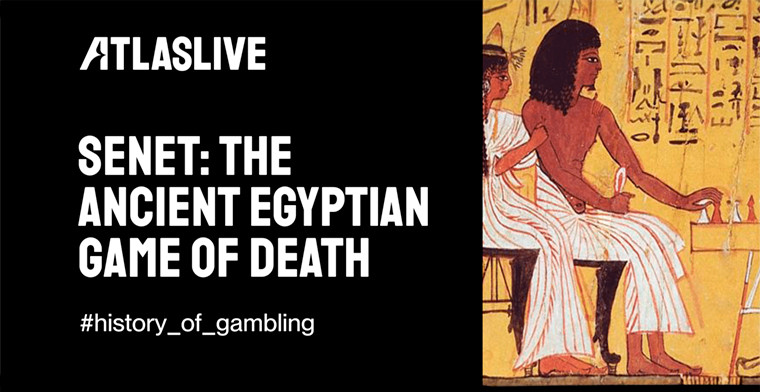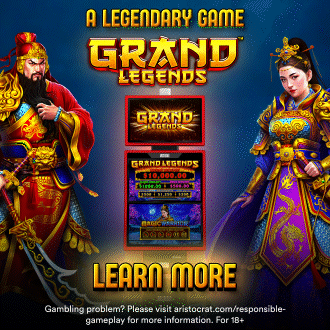Atlaslive explains the story behind Senet: The ancient Egyptian game of death
Friday 18 de July 2025 / 12:00
2 minutos de lectura
(Lisbon).- Atlaslive reveals the secrets of humanity's oldest board game: Senet, a mysterious competition that was simultaneously entertainment, a religious ritual, and a journey to the afterlife.

The game in the year 3000 BC
In the scorching heat of ancient Egypt, as the waters of the Nile receded and the harvest season began, pharaohs and peasants gathered around simple wooden boards marked with thirty squares. They were about to participate in humanity's oldest board game: Senet, a mysterious contest that was at once entertainment, a religious ritual, and a journey to the afterlife.
The game that transcended death
Senet, which means "passage" in ancient Egyptian, emerged during the Predynastic period, around 3100 BC, making it older than Stonehenge and contemporary with the earliest Egyptian hieroglyphics. What began as a simple racing game evolved into something much deeper: a sacred simulation of the soul's perilous journey through the Duat, the Egyptian underworld.
Archaeological evidence reveals that Senet was not a mere pastime, but a cultural obsession that spanned more than 3,000 years of Egyptian civilization. Game boards have been discovered in tombs ranging from humble mud-brick graves to the gilded splendor of Tutankhamun's burial chamber, where four complete sets of Senet awaited the boy king's endless play sessions.
The Battlefield of Eternity
The Senet board consists of 30 squares arranged in three rows of 10, creating a winding path that players travel from beginning to end. The last five squares held special significance, each marked with hieroglyphs representing crucial stages of the afterlife journey. The House of Happiness, the House of Water, the House of the Three Truths, the House of Re-Atoum, and finally, the House of Horus: each square presented its own challenges and rewards.
Instead of dice, players used sets of cast sticks or knucklebones, which they threw to determine their move. The randomness inherent in these throws was not considered mere chance, but divine intervention: the gods themselves guided the player's fate around the board. This element of uncertainty made Senet particularly suitable for gambling, as the outcomes remained tantalizingly unpredictable even for the most skilled players.
Playing with the gods
Evidence suggests that senet was frequently played for stakes, transforming friendly games into intense gambling sessions. Papyri describe bets ranging from bread and beer to livestock and even slaves. The wealthy elite could wager gold, precious stones, or plots of fertile Nile Delta land. Archaeological finds include gaming pieces made of ivory, ebony, and precious metals—materials too valuable for casual play.
The recreational aspect of Senet was not limited to material gains. The Egyptians believed that winning at Senet indicated divine favor and a peaceful passage into the afterlife. Conversely, persistent losses could suggest spiritual obstacles or the displeasure of the gods. This religious dimension elevated the game from a simple gamble to a form of divination, turning each round into a consultation with cosmic forces.
Real obsession and common passion
The pharaohs were legendary enthusiasts of Senet. Ramses II had game boards carved in the temples at Abu Simbel, while Amenhotep III was buried with several ebony and ivory sets. Queen Nefertari, Ramses II's beloved wife, was depicted in her tomb playing Senet against invisible opponents, likely representing her struggle against death itself.
However, senet's appeal transcended class boundaries. Simple clay boards and crudely carved pieces found in workers' villages demonstrate that everyone from royal architects to pyramid builders enjoyed the game. Graffiti etched on temple steps and tomb walls demonstrate that, even during solemn religious ceremonies, people couldn't resist a quick game.
The spiritual dimension
By the New Kingdom period (1550–1070 BC), Senet had evolved beyond entertainment to become a genuine religious practice. The game became a metaphor for the soul's journey through the afterlife, with each move representing a step toward resurrection or eternal damnation. Funerary texts describe deceased souls playing Senet against the gods themselves, with victory ensuring passage to the Field of Reeds, the Egyptian paradise.
This spiritual transformation explains why Senet tablets were essential funerary goods. The dead needed to be prepared for their final game, where the stakes were literally life and death in the eternal realm. Funerary paintings frequently depict the deceased playing Senet, sometimes alone, sometimes with divine opponents, always with the serene confidence of their ultimate victory.
The mathematics of mortality
Modern analysis of Senet reveals sophisticated mathematical principles underlying its seemingly simple mechanics. The probability calculations required for optimal play demonstrate that the ancient Egyptians possessed advanced knowledge of chance and statistics. The game's structure creates natural dramatic tension, as initial advantages are frequently offset by subsequent setbacks—a perfect metaphor for the unpredictable nature of life.
The throwing sticks used to determine movement created complex probability distributions. Players had to calculate not only immediate moves but also long-term strategies, taking into account the probability of landing on beneficial or detrimental squares several turns in advance. This mathematical complexity made Senet an intellectual challenge worthy of the civilization that built the pyramids.
Archaeological revelations
Recent excavations continue to reveal the pervasive influence of Senet throughout Egyptian society. The tomb of Hesy, a high-ranking official of the Third Dynasty, contained what may be the oldest known complete Senet game, featuring intricate hieroglyphic decorations and game pieces carved from precious stones. Each discovery adds new layers to our understanding of this ancient obsession.
Particularly intriguing are the numerous ostraca (pottery fragments and limestone flakes) with hastily scratched Senet boards. This suggests that the games arose spontaneously wherever Egyptians gathered, from royal workshops to quarries. Apparently, workers couldn't resist scratching a quick board during breaks, using pebbles or breadcrumbs as playing pieces.
The final move of the game
The popularity of Senet began to decline during the Roman period, when ancient Egyptian religious traditions gave way to new beliefs. The last known Senet boards date from around 400 AD, marking the end of humanity's oldest gaming tradition. However, the game's influence persisted in subtle forms, with similar board games appearing throughout Africa and the Mediterranean world.
Modern attempts to reconstruct the rules of Senet have resulted in playable versions, although the complete original ruleset remains tantalizingly difficult to find. What we do know is that, for over three millennia, Senet served as entertainment, a means of play, a religious ritual, and a philosophical metaphor—a remarkable achievement for thirty squares on a wooden board.
The legacy of the ancient game
Senet represents more than just an archaeological curiosity; it reveals fundamental aspects of human nature that transcend time and culture. The desire to test fate, to compete with friends, to seek divine guidance through games of chance: these impulses drove the ancient Egyptians to their gaming boards just as they drive modern gamblers to casinos and gaming tables today.
In an age when death was omnipresent and the afterlife uncertain, Senet offered a unique combination of entertainment and spiritual preparation. Players could simultaneously have fun and practice for the ultimate game that awaited them in the afterlife. Few human inventions have so elegantly combined pleasure with purpose, making Senet truly worthy of its title as the world's first great board game.
The next time you roll the dice or move pieces on a board, remember that you are participating in a tradition that dates back to the dawn of civilization, when the ancient Egyptians first discovered that the best games are those in which the stakes are highest, and where chance and skill dance together in eternal, unpredictable harmony.
Categoría:Others
Tags: atlaslive,
País: Portugal
Región: EMEA
Event
G2E - Las Vegas 2025
06 de October 2025
CT Interactive on Innovation, Networking, and Market Growth at G2E 2025
(Las Vegas, SoloAzar Exclusive).- The global gaming industry marked G2E’s 25th anniversary with a major gathering in Las Vegas. CT Interactive stood out for its innovative product development and international growth strategy. Account Manager LATAM at CT Interactive, Roberto Muñoz, shared insights on G2E’s importance, emerging trends, and the company’s collaborative expansion efforts.
Thursday 30 Oct 2025 / 12:00
Atlaslive Explored the Future of Gaming in Latin America at Recent G2E 2025
(Las Vegas, SoloAzar Exclusive).- Bruno Almeida, Head of Sales LATAM at Atlaslive, attended G2E for the first time to explore how land-based and online gaming are converging. His experience highlighted key trends shaping the Latin American market, from immersive casino innovations to strategic networking and regulatory insights.
Monday 27 Oct 2025 / 12:00
G2E 2025: Cristian Galarza, ASAP Director Explains the Importance of Attending the Event
(Las Vegas, SoloAzar Exclusive). - After attending the 25th anniversary edition of G2E in Las Vegas, ASAP’s director shares his perspective on the evolution of the industry, driven by digitalization, efficiency, and the creation of international networks that foster new business opportunities.
Tuesday 28 Oct 2025 / 12:00
SUSCRIBIRSE
Para suscribirse a nuestro newsletter, complete sus datos
Reciba todo el contenido más reciente en su correo electrónico varias veces al mes.



























